In June, I spent a week near Burgos in northeastern Spain as a participant and researcher of the ROOTS project, an initiative by Markus Klek from palaeotechnik.eu. The project invites people to share and explore the challenges of living in the past, in our case more specifically the western European Mesolithic/Neolithic transitional phase. The challenges affect all aspects of daily life, as food and cooking, clothing, the use of tools, craft activities, and the provision of shelter and warmth were dependent on the materials available at the time. This meant that neither metal or plastic was allowed, and that modern intrusions in the form of medical and other aids such as glasses were kept to a minimum (read more about the ROOTS project here).
This setting allowed for the collection of interactional data that showed how
- participants adapt to unconventional and unfamiliar environmental, material and spatial affordances and
- pastness, i.e. a relationship to and understanding of the past was enacted.
Particularly interesting interactions included the following settings and activities:
Creating and modifying space: Upon arriving in the area, a densely wooded landscape with oak trees, participants selected a suitable spot in the area to set up camp. To provide against the rather unreliable weather, the camp had to undergo several modifications to install more sheltered areas and to protect the hearth with the fire.
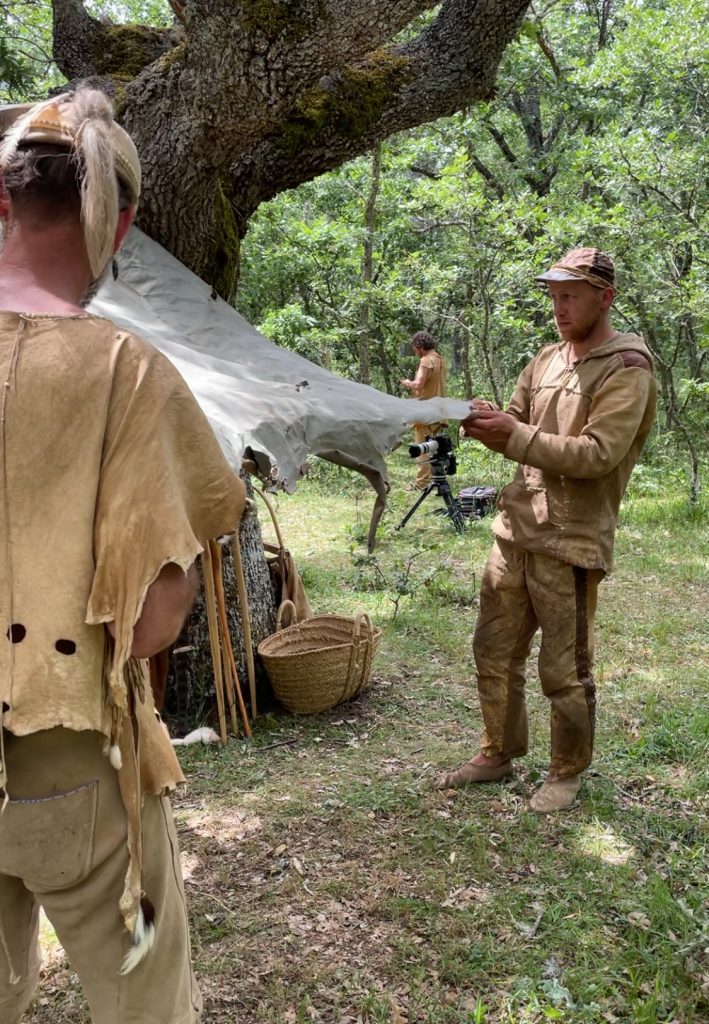
The planning and execution of such shelters required discussions and joint cooperative actions in the spatial environment of the camp, using material resources such as flint blades, plant-based string material and animal skins. Participants relied on their own experiential knowledge while at the same time (re)discovering knowledge and solutions that could plausibly be attributed to predecessors (for interaction with predecessors see e.g. Goodwin 2018). (Image credit: Antje Wilton)
Exploring space: The group took frequent walks in the wider area, a paleolithic park which was populated by animals such as aurochs, bison and horse.

They also revisited previous camps, exploring and evaluating how the site had changed during their absence – in particular, how the passing of time had altered the appearance of objects that had been left behind. Such interactions provided insights into how the group moved within the area, how they reflected on previous uses of the space and how they interpreted traces of previous occupation with respect to social activities. (Image credit: Antje Wilton)
Conceptualizing space: As the group became more familiar with the area, their mental representations of the layout converged into common knowledge about where certain places are in relation to other places, and how they should be (or became) named.
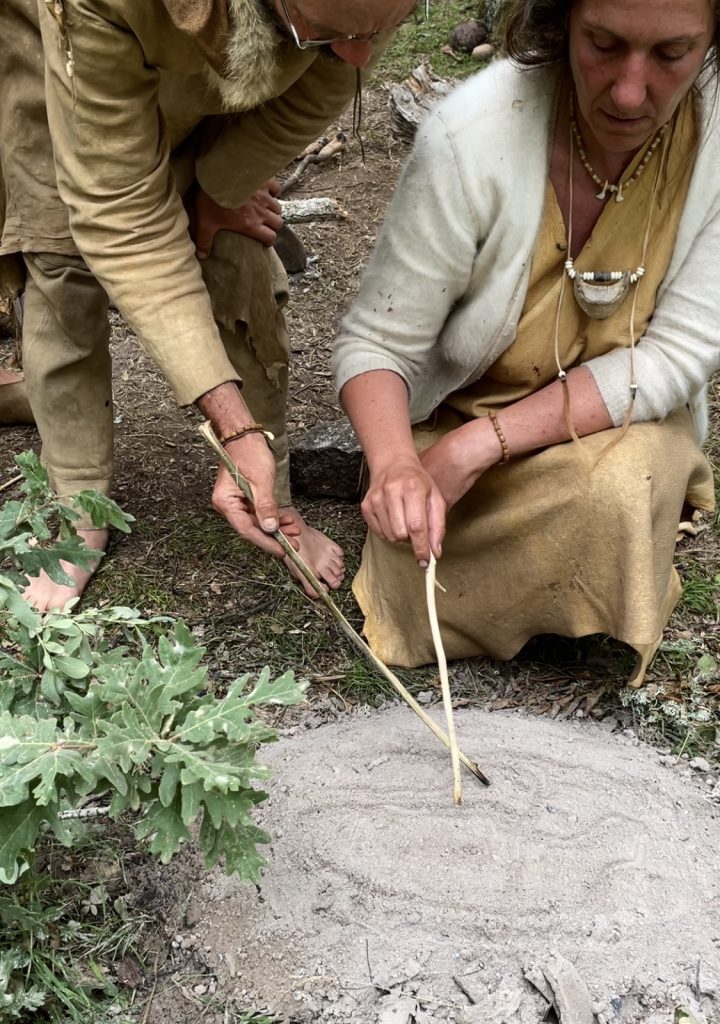
This shared knowledge manifested itself in the creation of temporal maps, which participants drew into the ash and discussed together. Interestingly, the map not only emerged visually in space, but also temporally, as participants redrew the map several times with an increasingly narrow focus on the location of the camp. Additionally, the heap of ash allowed a vertical extension of the map into a 3D-model of the landscape. (Image credit: Antje Wilton)
Using space: A central task of the group was to keep the fire in the hearth going during the day. The fire provided the main focal point of the camp, and participants gathered around the hearth to engage in various types of activities, such as cooking and crafts as well as discussions and storytelling. Through the activities, the hearth itself became structured into different zones, where heat regulation and vigilance were adapted to the task at hand, i.e. the cooking and heating of meals in a ceramic pot, the careful drying of freshly made pottery, the smoking of meat, baking on heated stones, roasting of hazelnuts in the hot ash, frying fresh fish etc.
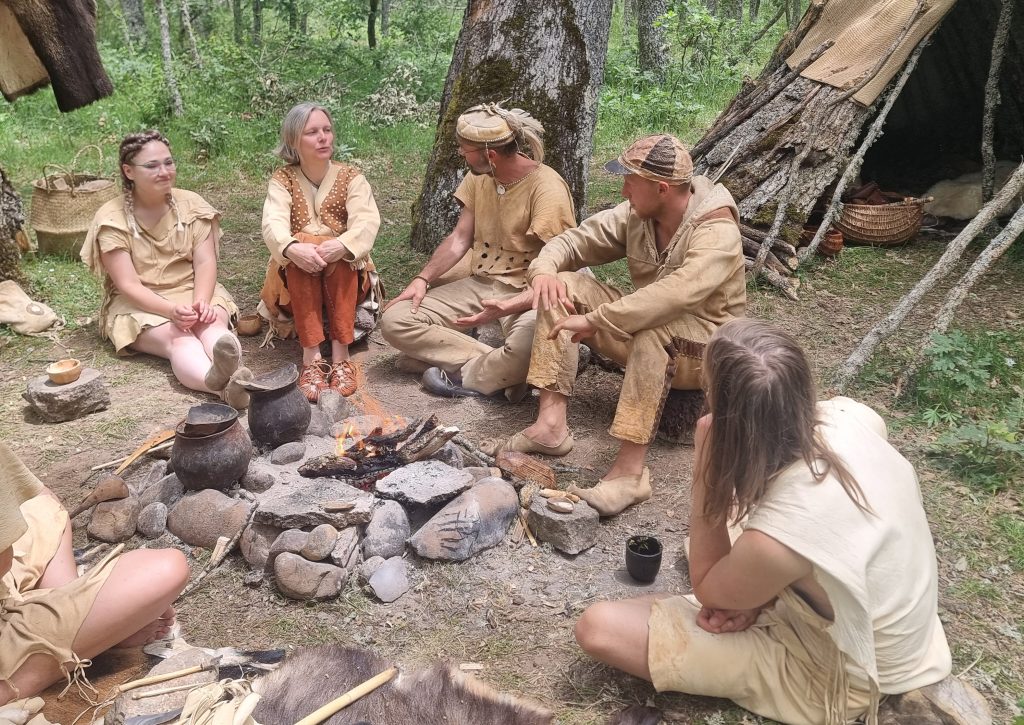
This required constant coordination and joint action among participants sitting in different positions around the central hearth, continuously shaping and reshaping the interactional space (more on the concept of interactional space in Mondada 2014). (Image credit: Markus Klek)
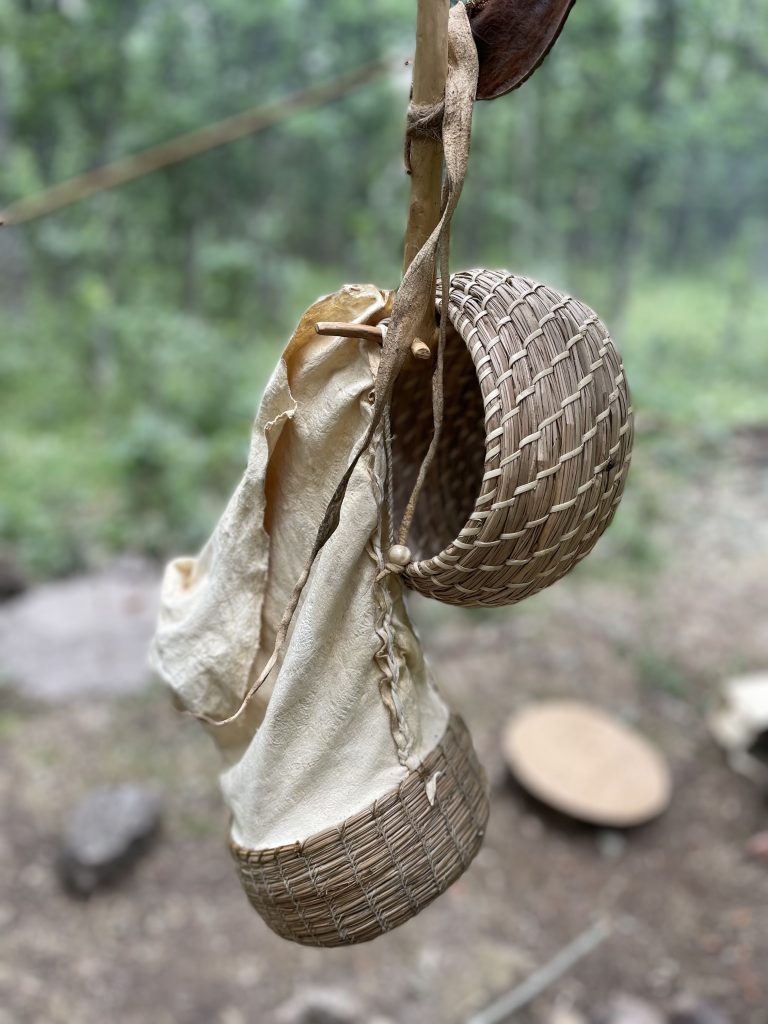

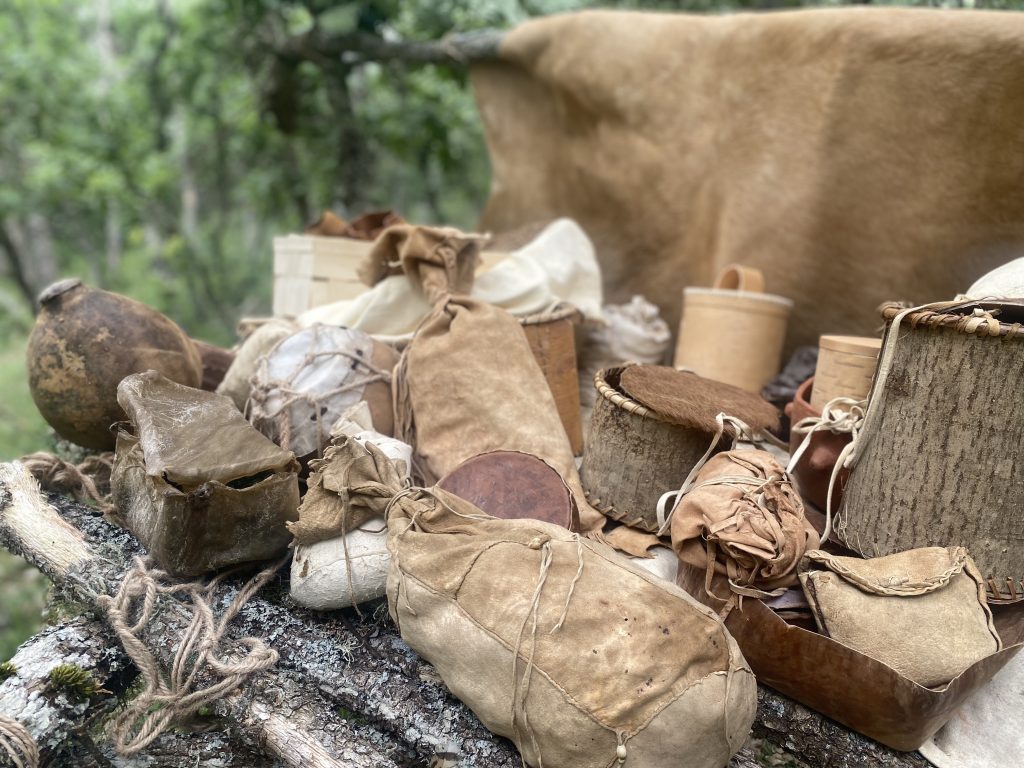
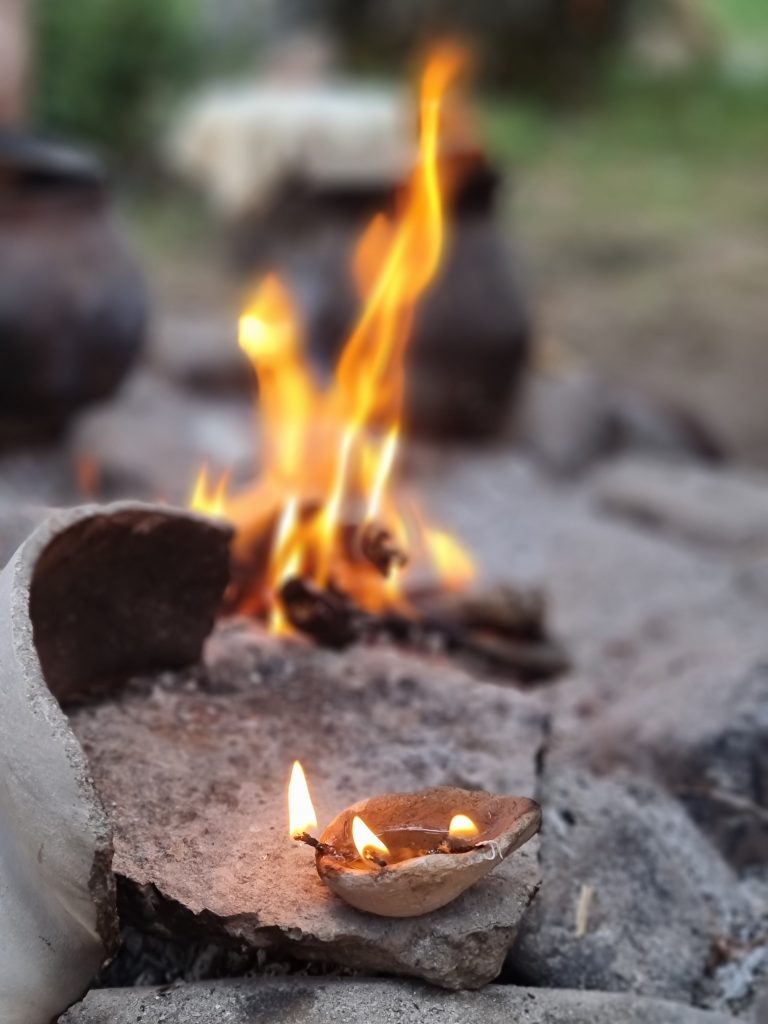

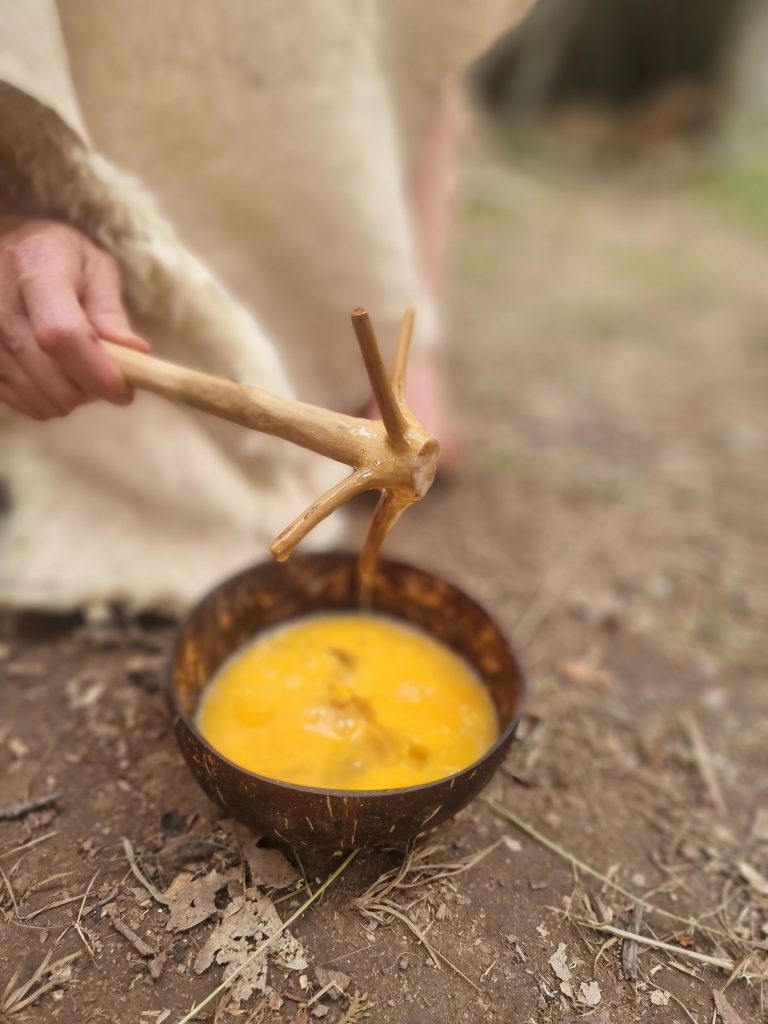
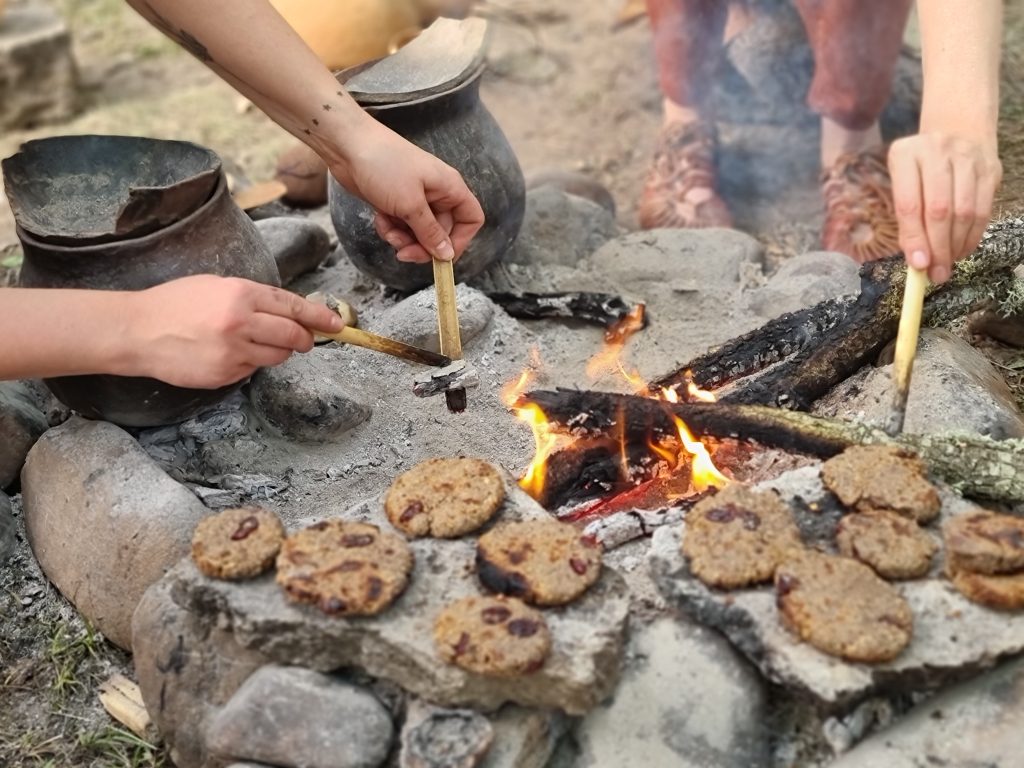
The insights we hope to gain with this new set of data are expected to shed more light on how pastness is enacted and achieved in interaction, how adaptation to environmental, material and spatial affordances manifests itself in interaction and how such behaviours inform us about basic human interactional processes in spaces where modern architectural infrastructure is minimal or absent.
Apart from being a rich source of interactional data, the week in the woods near Burgos was also great fun – thanks to a lovely bunch of people including Markus, Tine, Mike, Marian and Olga, and Eduardo and Estefania from Paleolitico Vivo!
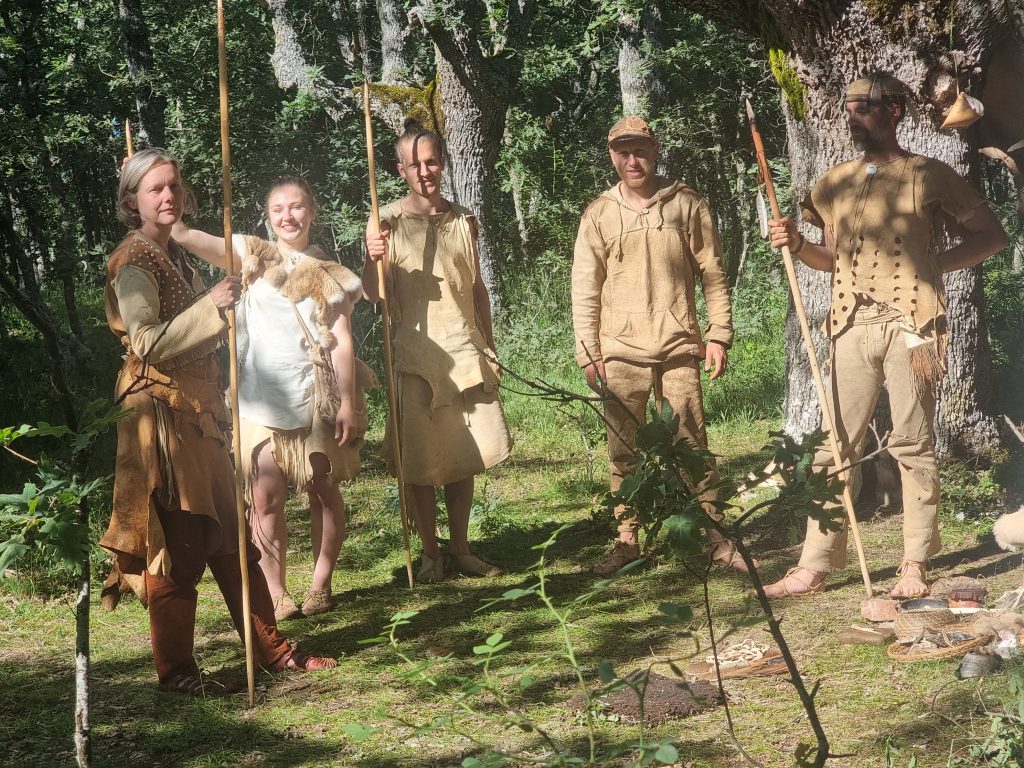
To experience the area that has been home to humans for more than 850.000 years (and likely even much earlier), as evidenced by the world famous UNESCO World Heritage site of Atapuerca nearby, in such an immediate and immersive setting was truly inspiring and instructive.